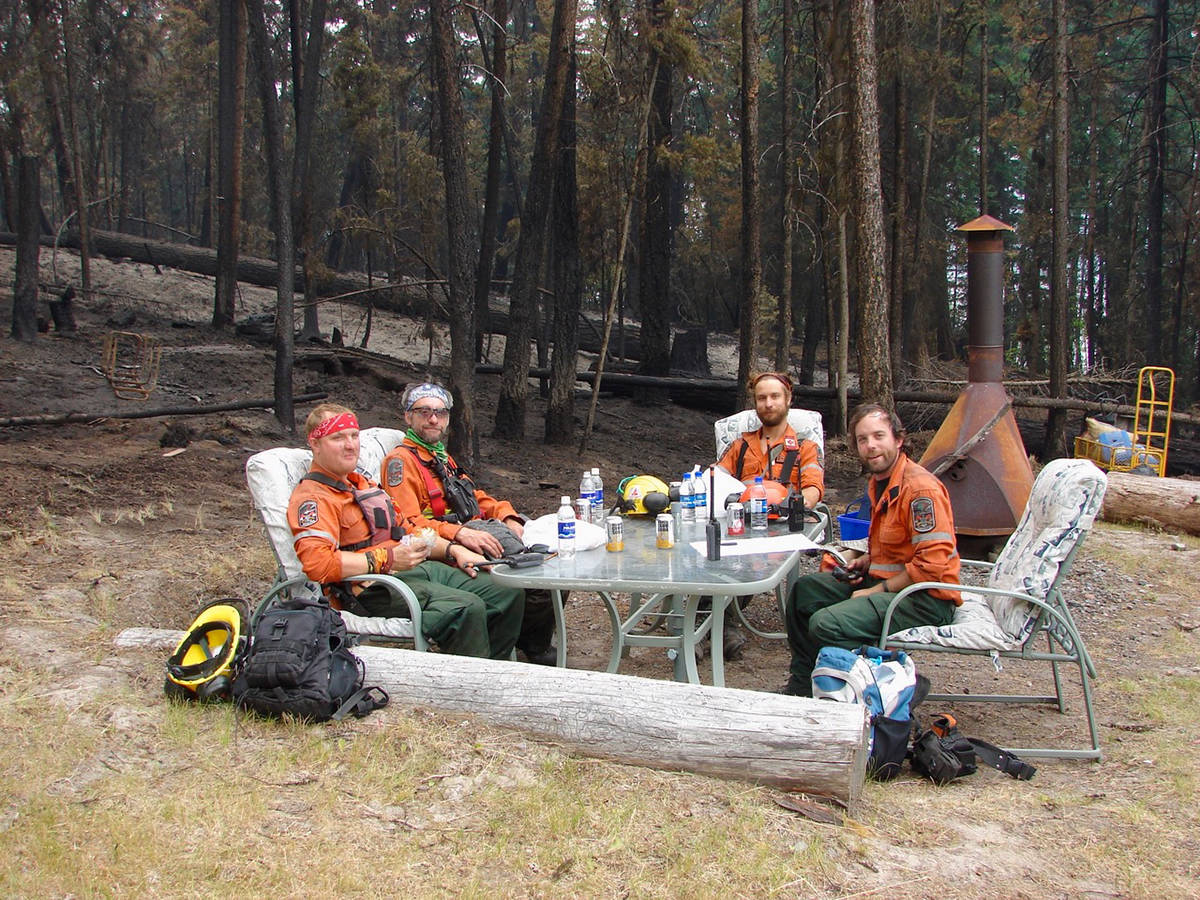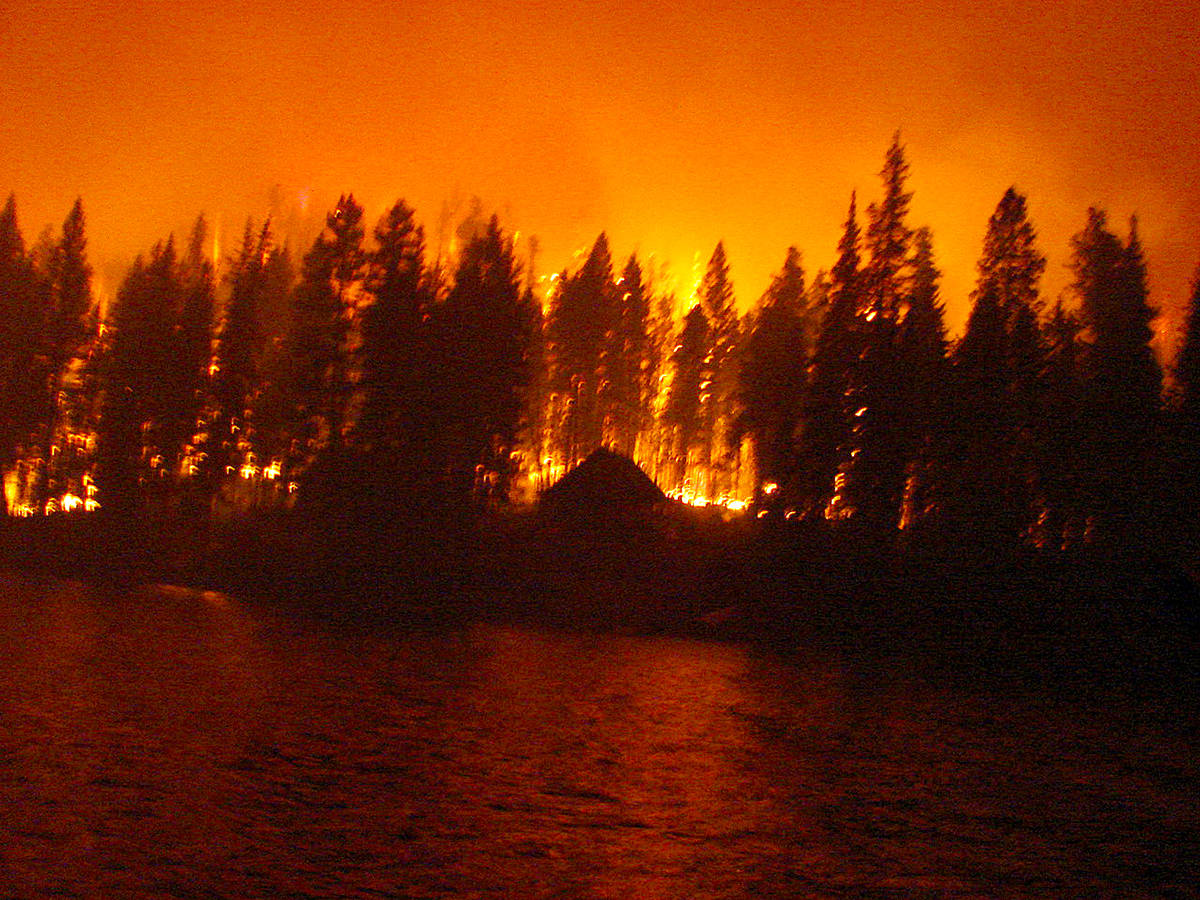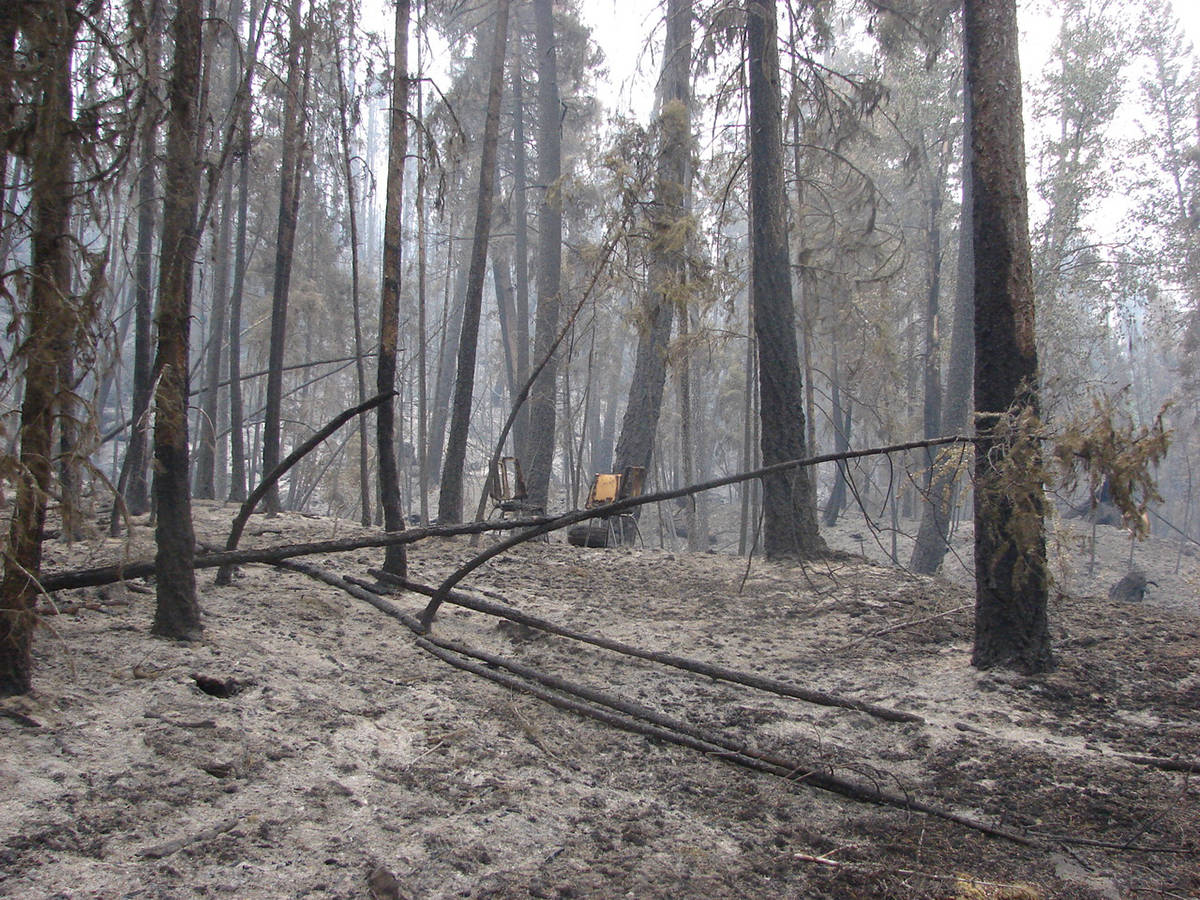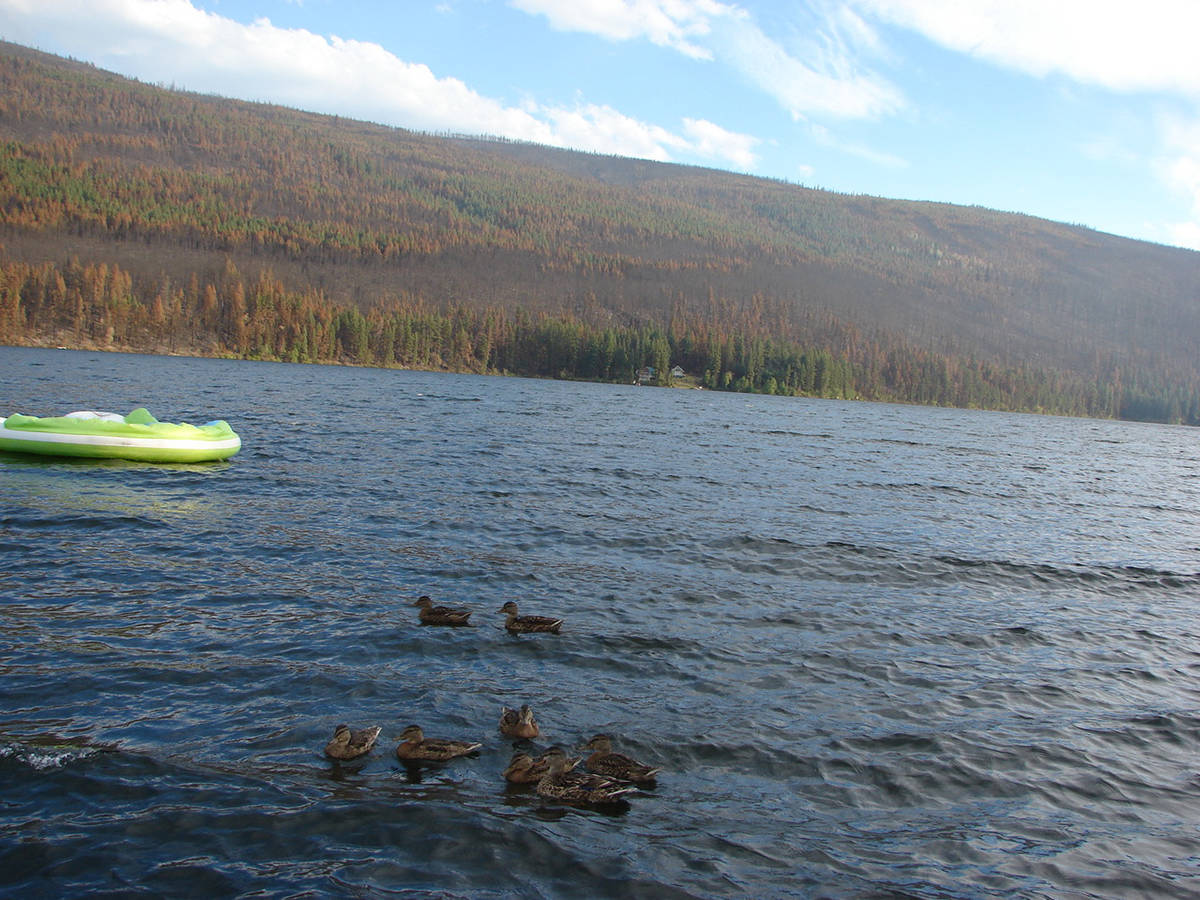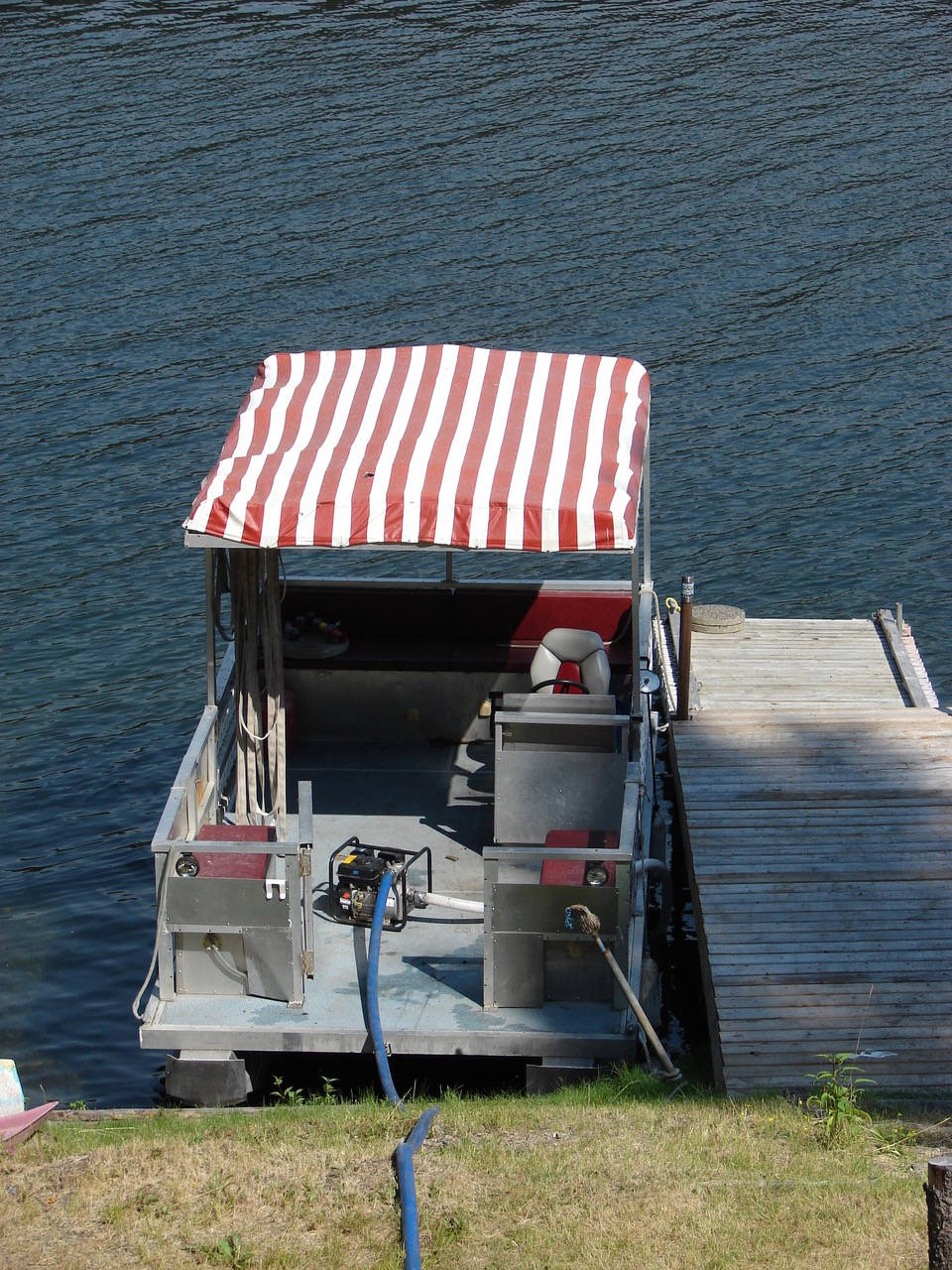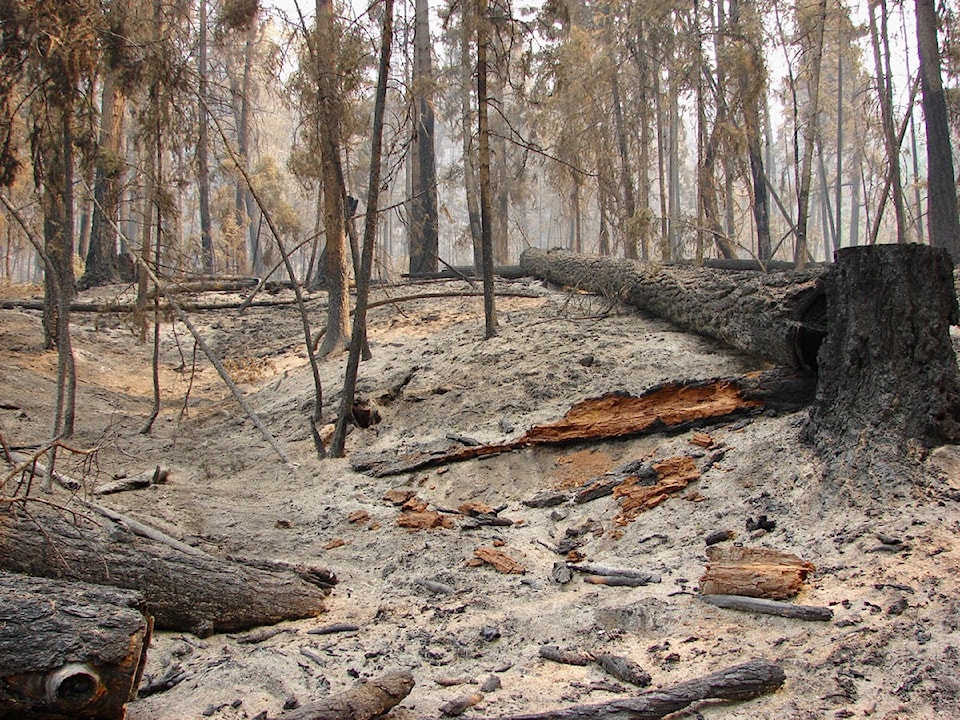When Shawn Cahill returned to Loon Lake to survey the damage his cabin sustained from the Elephant Hill wildfire, the Langley man was shocked to see the green and white building sitting untouched amidst the forest of charred trees.
The cabin directly west of his was reduced to an ashy rubble, and the ones on the point to the east were completely incinerated. The neighbour’s house beside him on the east, however, also managed to escape the flames.
Cahill was in “disbelief.”
“We saw it burn,” said Cahill, a Township of Langley firefighter at Murrayville Hall 6. “My good buddy up there … actually said to me, ‘I will, till the end of my days, envision your cabin burning. I saw it.’
“I had gone up and watered my neighbour’s and my place, and exactly where I watered, the fire didn’t come in anywhere. It was unbelievable. It was like a perfect tracing of the waterline. It was unreal.”
RELATED: Township firefighter watched helplessly as cabins burned at Loon Lake
RELATED: Wildfire emergency extended a third time
On July 14, Cahill and a small group of firefighter friends drove up to Loon Lake, located about 40 minutes north of Cache Creek, after hearing that the fire, orignally dubbed the Ashcroft reserve wildfire, was inching closer to their summer homes.
They watered their cabins, removed flammables, and travelled to the opposite side of the lake to help other residents protect their properties. When the group was finally forced to evacuate, Cahill said he saw his neighbour’s cabin on fire, and an orange glow surrounding his.
“I know I said before that I gave a five per cent chance of hope of seeing my cabin, but in reality, honestly, I saw the whole point burn, so I wasn’t holding much of anything.”
His first glimmer of hope came after someone from the Thompson Nicola Regional District posted a picture online of the Marigold Fishing Resort, located across the lake from his place. In the very faint distance, he could see the white outline of the trim on his cabin, but he assumed it was an old photo.
“We went up there and it was sitting there, it was unbelievable … I will always see my neighbour’s cabin glowing orange. And it was fine, too. But that whole bank, the whole side of that lake was just orange, it was a big ball of fire. It was pretty wild.”
Over the past month, Cahill has returned to Loon Lake many times to help the local fire department. Their firefighters have to be given a three-day break every two weeks, so on his days off, Cahill and a number of other Fraser Valley firefighters have volunteered to relieve them.
There are a number of hot spots and grass fires still being put out every day.
“When I left yesterday (Aug. 16), it was actually the calmest I’ve seen it,” Cahill said.
“Still very smoky, but yeah it’s going to be burning until the snowfall puts it out. It’s burning very hot, and it’s burning very deep. There during the day there’ll be nothing, and all of a sudden you look and there’ll be a tree candling because it’s been underground, working its way up a tree. It will be a long time before it all cools right down.”
Cahill says the team has been working very hard, and since the fire burned through the power lines, they’ve been voluntarily taking out fridges from the homes still standing to ensure they don’t become rancid with rotting food.
“There’s a lot of loss, a lot of loss. And the animals, their forest is gone. So when you go up there now, you have to really watch where you’re driving. This last trip I saw a badger, a cougar, a bear, we saw lots of deer with fawns. They’re bringing their fawns in to eat, you name it.
“There’s a lot of things involved that you don’t think about.”
According to a press release issued by the Loon Lake volunteer fire department society on Aug. 11, the wildfire, which originated in Ashcroft, travelled up the entire 15 km length of Loon Lake in just eight hours. There were 376 properties evacuated, and 60 structures destroyed, including their fire hall.
“As much as it’s a happy ending for me, it’s not going to be a happy ending for a lot of people,” said Cahill.
“(For many) people, that’s their getaway, that’s where they go to recharge, they’ve been doing it for 40 years and it’s just been taken away from them. I feel bad for them. But we’ll help them rebuild. It’s going to be a big community effort.”
RELATED: 2017 now worst wildfire season in B.C.
